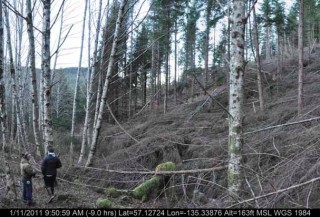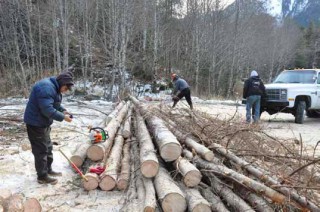Group works with community to realize economic gains from good environmental stewardship
Until this spring, deer trying to move along sections of Starrigavan Creek outside Sitka would have needed stilts – or maybe a ride on a helicopter. Logging operations had left the forest floor buried under an impenetrable maze of downed trees and branches, piled more than 6 feet deep in places (see photo.)

Not that a deer would have much reason to venture along the creek. The deep layer of logging slash chokes off any plants that deer want to eat. For deer, this logged-over area was a biological desert.
But that changed this spring, thanks to an innovative partnership between ACF grantee, Sitka Conservation Society (SCS) and the landowner, the US Forest Service.
SCS got funding from the National Forest Foundation and hired a local logger to clean up a 5.2-acre patch of forest along the creek. The logging crew used a winch to pull out the biggest logs, then made them available as firewood for local residents. In Sitka, heating oil is an expensive energy source, so the offer of free firewood drew a lot of takers. “People have been picking up the firewood as fast as the loggers can pull it,” says SCS staffer Zia Brucaya.

Students from Sitka High School have joined in the project as well. They will set up two research areas, fenced plots that will keep deer out. One area will be cleared of slash and the other left with a jumble of downed trees. Over the next 10 to 15 years, Sitka High students will help monitor how fast the two different types of logged-over land regrow the plants that deer eat.
It’s the kind of project that has become Sitka Conservation Society’s specialty: one that helps both the environment and the local economy. By cooperating with a government agency and bringing in new funding, SCS was able to produce work for loggers, firewood for local residents, better habitat for deer, and a project for local school students.
“At SCS, we are working to bring user groups together and find common ground solutions that improve community and ecosystem health,” says executive director Andrew Thoms.
The slash-removal project is part of a broader plan now guiding restoration work in the Starrigavan watershed. In 2008, SCS and the Forest Service worked together to get community input for that plan. SCS recruited experts in sustainable development and helped the agency draw a diverse range of participants to a planning workshop.
At Starrigavan, the Forest Service is showing that an effort whose main goal is to restore deer and salmon habitat can do a lot more. It can also supply forest products from second growth, offer firewood for fuel, and expand recreation opportunities.
“The Sitka Ranger District has been pioneering efforts to combine community and ecological benefits in restoration projects,” says Thoms. “The Starrigavan watershed restoration projects are representative of what should occur across the entire Tongass.”
With 57,000 acres of previously clearcut land in the Sitka area, there’s lots of restoration work to be done. When SCS looks at that logged-over land, it sees more than a forest management problem, it sees an economic opportunity.

As with the Starrigavan project, thinning the dense regrowth can simultaneously improve the forest for wildlife habitat and produce wood for local businesses. Expanding the supply of wood from second growth reduces the pressure to log in old-growth areas SCS would like to protect.
Restoring logged-over land is also good for the region’s salmon industry, which adds nearly $1 billion a year to Southeast Alaska’s economy and supports 1 in 10 jobs. Some salmon streams were damaged by early logging practices, which cut trees right down to the streambank. The Tongass National Forest by itself produces more salmon than all other national forests combined. Twenty-eight percent of all salmon caught in Alaska come from the Tongass.
“The Tongass National Forest truly is a salmon forest,” says SCS director Thoms. “Supporting the Forest Service’s restoration work is one way we pursue our twin goals of protecting wilderness and developing a sustainable local economy.”
Despite four decades of industrial logging to feed two big pulp mills that closed in the 1990s, the Tongass still holds large stands of old growth coastal rainforest. SCS is working to keep that rainforest wild and expand the areas that are protected.
The group is even helping USFS manage its existing wilderness areas. SCS sends volunteers into the field to gather baseline data on plants and animals.
Last year, those efforts helped SCS win the Forest Service’s Champions of Wilderness award. The award also noted that SCS founders Chuck and Alice Johnstone were instrumental in persuading Congress to designate the West Chichagof-Yakobi wilderness area in the landmark 1980 Alaska lands act.
That wilderness helps draw adventure travelers to the region. Southeast Alaska’s strong and vibrant Native cultures are another drawing card. This spring, SCS helped the Forest Service connect with local business people and entrepreneurs by sponsoring free public sessions at the recent Heritage and Cultural Tourism Conference. It was another example of the group’s efforts to show how the Tongass can support sustainable development.
The Forest Service appreciates the help. “The Sitka Conservation Society’s contributions add value to the Sitka Ranger District’s work, garner needed resources, and help to get the word out” about the agency’s projects, says district ranger Carol Goularte.
SCS is also working with the local utility in Sitka to expand the community’s supply of clean hydroelectric power. The Blue Lake project is fish-friendly – it will expand an existing lake, high in the mountains where it won’t interfere with any fish runs.
“Sitka has set ambitious goals for reducing carbon emissions and powering our community with renewable energy. Blue Lake is critical to meeting those goals,” says Thoms.
At this point, Blue Lake is bogged down in the permitting process, and SCS is trying to help push it along. Local utility director Chris Brewton told SCS in an email, “I truly appreciate your support.”
Sitka has long since moved past the timber wars that tore the town apart back when the pulp mill was still running
Says Thoms, “Sitka’s economy has flourished and diversified and has become a model for a community striving to live in a sustainable relationship with its natural environment.”


